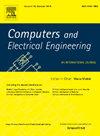An encrypted and signed plaintext symmetric cryptosystem
IF 4
3区 计算机科学
Q1 COMPUTER SCIENCE, HARDWARE & ARCHITECTURE
引用次数: 0
Abstract
Traditionally, encryption and digital signatures are handled as separate processes, resulting in distinct ciphertexts. This article investigates a novel approach to integrating encryption and digital signatures within a symmetric cryptosystem to meet the dual requirements of confidentiality, integrity, and authenticity in secure communications. Our research proposes a method that combines encryption and signature functionality within a probabilistic symmetric cryptosystem, reducing operational complexity and minimizing overhead. We introduce a protocol that employs a shared secret key for both encrypting plaintext and generating a verifiable signature within a single ciphertext. By modifying the encryption process, we enable certain variables to function as an implicit signature. The security and performance implications of this protocol are rigorously evaluated through theoretical analysis and experimental testing. Results show that the proposed scheme maintains robust security while significantly improving message-handling efficiency, it achieves four layers of security against quantum computer attacks and five against classical computers, compared to only one, two, or three layers in previous techniques in literature. To the best of our knowledge, this is the first protocol to merge encryption and digital signature creation into a single process and ciphertext, offering an enhanced solution for secure communications.
求助全文
约1分钟内获得全文
求助全文
来源期刊

Computers & Electrical Engineering
工程技术-工程:电子与电气
CiteScore
9.20
自引率
7.00%
发文量
661
审稿时长
47 days
期刊介绍:
The impact of computers has nowhere been more revolutionary than in electrical engineering. The design, analysis, and operation of electrical and electronic systems are now dominated by computers, a transformation that has been motivated by the natural ease of interface between computers and electrical systems, and the promise of spectacular improvements in speed and efficiency.
Published since 1973, Computers & Electrical Engineering provides rapid publication of topical research into the integration of computer technology and computational techniques with electrical and electronic systems. The journal publishes papers featuring novel implementations of computers and computational techniques in areas like signal and image processing, high-performance computing, parallel processing, and communications. Special attention will be paid to papers describing innovative architectures, algorithms, and software tools.
 求助内容:
求助内容: 应助结果提醒方式:
应助结果提醒方式:


